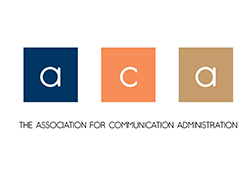Abstract
Consistency is imperative to the success of a multi-section basic course. However, establishing consistent practices is a difficult task, especially when coupled with maintaining instructor autonomy. Learning analytics tools, designed to improve learning and teaching by collecting and analyzing pertinent information through interactive databases, can be used by basic course administrators to improve consistency. Using a reflective case study methodology we share our experience incorporating a learning analytics platform into our basic course. In doing so, we highlight the role this technology can play in terms of identifying areas of inconsistency as well as informing ways to improve overall course delivery. Three major areas of inconsistency were uncovered: (1) the use of online grade books; (2) utilization of course-wide rubrics; (3) and instances of grade inflation. Stemming from these findings is a set of very practical implications regarding the coupling of learning analytics and basic course administration. These include clarifying the two-step process of identifying inconsistencies and informing solutions as well as introducing the concept of collaborative consistency, the term we use to describe the co-construction of course materials (e.g., rubrics, schedules) and activities (e.g., norming). The case ultimately provides the opportunity for basic course directors to embrace the role of learning analytics technology.
Recommended Citation
Anderson, L. B., Gardner, E. E., Wolvin, A. D., Kirby-Straker, R., Yalcin, M. A., & Bederson, B. B. (2016). Incorporating learning analytics into basic course administration: How to embrace the opportunity to identify inconsistencies and inform responses. Journal of the Association for Communication Administration, 35(1), 2-14.


